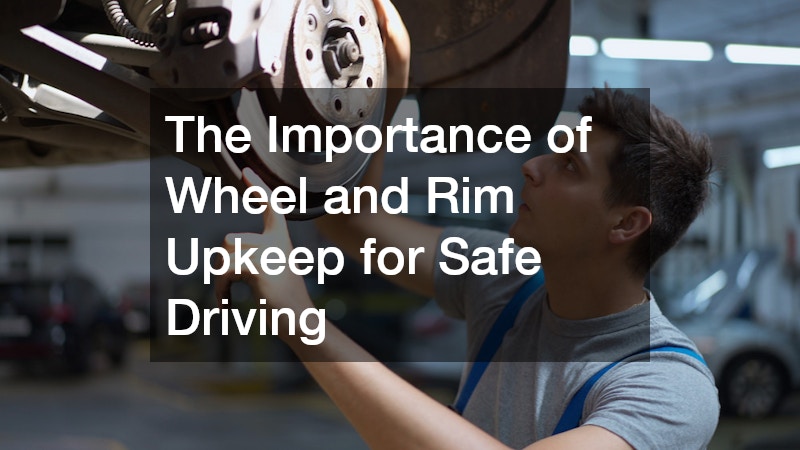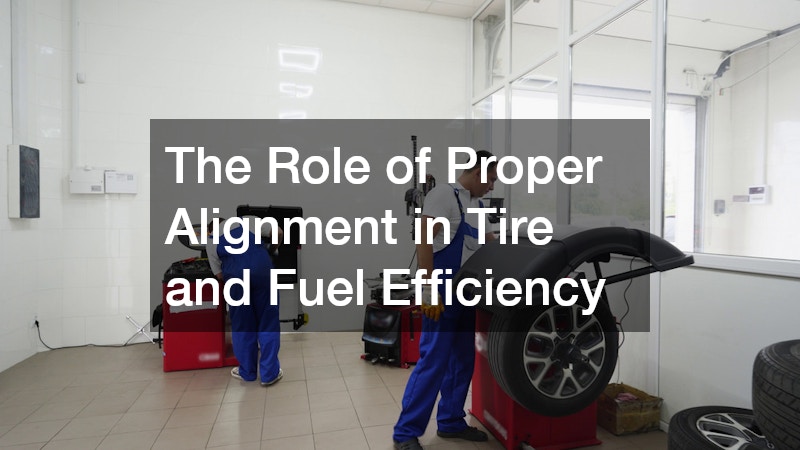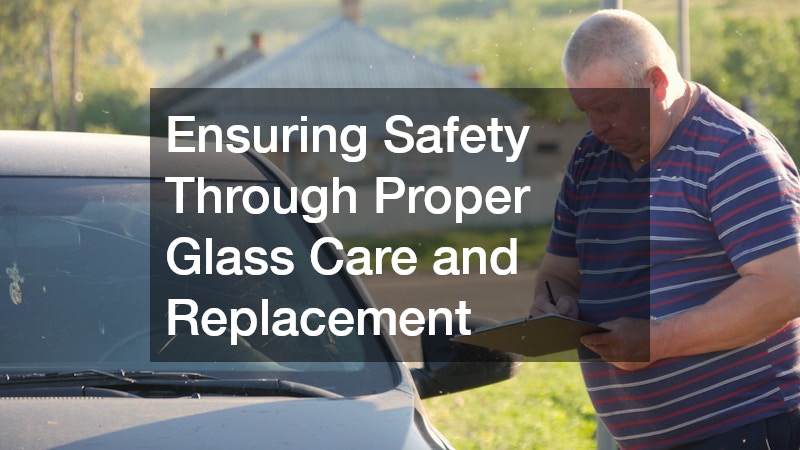- Routine maintenance saves up to 40% in long-term repair costs.
- Wheel alignments can boost fuel efficiency by nearly 10%.
- Using OEM parts for import auto repairs preserves performance and value.
- Over 60% of transmission failures are caused by neglected fluid changes.
- Regular car detailing improves resale value by up to 15%.
- Proper auto glass replacements restore safety and prevent vision distortion.
- Prevention is always cheaper — proactive car care = long-term savings.
Introduction: The Complete Guide to Smart Car Care
Taking care of your car is about more than avoiding breakdowns — it’s about safety, performance, and long-term savings. Regular car care ensures that every component, from your tires to your transmission, functions efficiently and safely. Neglecting small issues can lead to expensive repairs later, while consistent upkeep keeps your vehicle dependable and your driving experience smoother.
According to the AAA Newsroom, 35% of American drivers skip scheduled maintenance, often resulting in breakdowns that could have been easily prevented. Proactive car care can extend your vehicle’s life span by several years and maintain its resale value. It also enhances safety — systems like brakes, steering, and visibility are directly linked to maintenance quality.
Beyond performance, car maintenance also benefits the environment. Well-tuned engines and proper emissions control reduce pollutants and improve fuel efficiency. Whether it’s replacing a cracked windshield, upgrading your car’s audio system, or maintaining your suspension, every detail counts toward the overall health and longevity of your vehicle.
This guide explores 10 vital aspects of vehicle care — from suspension and rims to detailing and glass — to help you keep your car in peak condition. Each section offers clear insights, practical tips, and data-driven guidance to help you become a more confident car owner.
1. How Regular Maintenance Keeps Your Ride Smooth and Stable
A smooth, comfortable ride depends on a well-functioning suspension system — the hidden hero that keeps your tires firmly gripping the road and your vehicle stable through every turn. It’s the system responsible for absorbing shocks from potholes, bumps, and uneven pavement, ensuring that you maintain control even under rough driving conditions.
Over time, however, constant friction, weight load, and environmental exposure wear down crucial suspension parts. When your car starts to feel bouncy, dips noticeably during braking, or drifts while cornering, it’s often an early sign that suspension repairs are needed. Neglecting these signs doesn’t just affect comfort — it can compromise braking efficiency and handling precision, making your daily commute less safe.
Your car’s suspension system is made up of multiple components, including shocks, struts, springs, control arms, and bushings. Each plays a vital role in stability and balance. When even one part fails, it puts additional stress on others, leading to accelerated wear and more costly fixes down the line. Timely repairing the suspension system ensures that your tires maintain even contact with the road, improving both traction and fuel efficiency.
In fact, poorly maintained suspension can cause uneven tire wear, forcing premature replacements. It can also affect alignment and steering control — two factors directly tied to safety. According to AAA, vehicles with worn-out suspension parts can require up to 20% longer stopping distances in emergencies, especially on wet or uneven roads.
A proactive approach to suspension maintenance can extend the lifespan of other critical components like axles, wheel bearings, and tires. When your suspension works efficiently, your entire vehicle benefits from smoother handling, improved stability, and a longer operational life.
Actionable Tips:
- Inspect annually: Have your suspension system checked every 12,000 miles or once a year.
- Listen for noise: Clunking or squeaking noises during turns are early indicators of wear.
- Avoid potholes: Rough terrain accelerates suspension damage.
- Check tire tread: Uneven wear often signals deeper issues in the suspension alignment.
According to the National Highway Traffic Safety Administration (NHTSA), suspension issues contribute to handling failures that increase accident risk. Timely attention to your suspension system ensures smoother drives, longer tire life, and enhanced safety.
2. Keeping Visibility Crystal Clear on the Road
Your car’s windshield does much more than shield you from wind and debris. It’s a critical safety component that supports your vehicle’s structure and aids in proper airbag deployment during accidents. Any cracks or chips compromise that integrity and can distort visibility, making driving dangerous. If damage spreads, auto windshield replacements may become necessary.
Even minor windshield cracks can worsen quickly with temperature changes or rough roads. A clear, undamaged windshield helps prevent glare and ensures full visibility during nighttime or rainy conditions. Replacing a windshield promptly also protects against water leaks and prevents further structural stress.
When replacing your windshield, ensure it’s installed by certified technicians using high-quality adhesive and OEM-grade glass. The car’s windshield is part of the vehicle’s overall framework — improper installation can weaken the entire front-end structure.
Actionable Tips:
- Inspect monthly: Look for chips or cracks, especially after highway drives.
- Repair small chips early: Filling minor cracks is cost-effective and prevents spreading.
- Use safe cleaners: Avoid ammonia-based products that damage tints and seals.
- Park wisely: Avoid direct sun exposure; extreme heat expands glass fractures.
According to the Insurance Information Institute, comprehensive auto insurance often covers windshield repair or replacement with minimal out-of-pocket expense. Prompt attention keeps your view clear and your car’s frame strong — an essential combination for every driver.
3. The Importance of Wheel and Rim Upkeep for Safe Driving

Rims might seem cosmetic, but they’re vital to your car’s performance and safety. They help maintain tire shape, support load distribution, and ensure smooth steering response. However, daily driving hazards like potholes, curbs, and debris can damage rims — often without the driver even realizing it. Over time, this leads to uneven tire wear, vibration, and reduced control, making rim repairs a crucial aspect of regular car maintenance.
When rims bend or crack, they disrupt wheel balance, causing strain on the suspension and decreasing fuel efficiency. Vibrations in the steering wheel or wobbling at higher speeds are often telltale signs of rim trouble. Left unaddressed, it can lead to blowouts or alignment problems.
The car’s rims need regular cleaning and inspection to prevent corrosion and rust buildup, especially in regions with salty winter roads. Keeping rims in good condition also enhances aesthetics and resale value.
Actionable Tips:
- Rotate tires regularly: Every 6,000–8,000 miles for even tread wear.
- Inspect after impacts: Potholes and curb hits often cause hidden bends.
- Avoid DIY fixes: Straightening rims at home weakens their structure.
- Clean properly: Use mild, non-acidic cleaners and a soft brush.
Proper rim maintenance ensures your tires last longer, your ride stays balanced, and your car performs efficiently. Investing in professional inspection can save hundreds of dollars in premature tire replacements.
4. Why Emissions Testing Is Essential for Your Vehicle’s Health
Modern vehicles rely heavily on emissions systems to maintain engine performance and environmental compliance. Emissions testing ensures that your car isn’t releasing excessive pollutants like carbon monoxide or nitrogen oxides into the atmosphere. A failed test often indicates deeper issues with the fuel system, spark plugs, or catalytic converter.
Routine car emissions testing helps maintain engine efficiency, reduces harmful gases, and improves fuel economy. When emissions systems fail, your car works harder and burns more fuel, increasing long-term costs. In some states, failing to pass emissions tests can even prevent registration renewal.
Your car’s emissions system includes sensors, converters, and valves — all requiring regular maintenance. Dirt, oil residue, and poor-quality fuel can clog filters and sensors, leading to higher emissions.
Actionable Tips:
- Use quality fuel: Lower-grade gas leads to carbon buildup.
- Replace filters: A clean air filter improves airflow and reduces pollutants.
- Maintain spark plugs: Misfires increase unburned fuel and emissions.
- Warm up before testing: Drive for 10–15 minutes to stabilize readings.
According to the U.S. Environmental Protection Agency (EPA), vehicles contribute nearly 28% of all greenhouse gas emissions in the United States. Regular testing ensures compliance, protects air quality, and promotes better vehicle health.
5. Enhancing Comfort and Entertainment Behind the Wheel
Your vehicle’s audio setup plays a bigger role than most drivers realize. A properly tuned car audio systems can make commutes more enjoyable, reduce fatigue, and improve focus on the road. Beyond entertainment, modern infotainment units also enhance safety through navigation, hands-free calling, and voice controls.
Upgrading or maintaining your car’s audio system helps maintain electrical balance and prevents power surges that can drain your battery. However, poorly installed systems may cause shorts or interference with other electronics, such as airbags or sensors.
Actionable Tips:
- Match power correctly: Speakers and amplifiers should be compatible with the car’s system wattage.
- Soundproof your doors: It enhances clarity by reducing road noise.
- Clean regularly: Dust in speaker grills affects sound output.
- Avoid over-bass: Too much vibration weakens door panels and connections.
A well-maintained car audio setup isn’t just a luxury — it contributes to better driving awareness and comfort. With careful tuning, quality components, and responsible volume levels, you can enjoy great sound and safer, more focused drives.
6. The Role of Proper Alignment in Tire and Fuel Efficiency

Keeping your car’s alignment in check might not sound glamorous, but it’s one of the smartest maintenance steps you can take for long-term savings and safety. When your wheels are even slightly off-balance, your tires no longer roll parallel to each other. This causes drag, reduces gas mileage, and accelerates tread wear. Over time, this misalignment can also put extra stress on suspension components, increasing the likelihood of premature repairs.
Research from the U.S. Department of Energy shows that misaligned wheels can reduce fuel efficiency by up to 10%. That means if you spend $150 per month on gas, poor alignment could be costing you $180 each year in wasted fuel — not to mention the added tire wear. Misalignment also causes your car to pull to one side, which compromises your control and adds stress to the steering system.
Beyond fuel savings, regular wheel alignments help improve tire longevity and maintain consistent handling. A properly aligned car drives smoother, stops straighter, and corners more predictably. Even a small improvement in alignment can make a noticeable difference in your vehicle’s comfort and stability.
Actionable Tips for Optimal Alignment:
- Schedule professional checks every 6 months: It’s especially important after hitting potholes, curbs, or driving rough terrain.
- Maintain proper tire pressure: Under- or overinflated tires throw off alignment readings and cause uneven wear.
- Balance your tires during seasonal rotation: Balancing ensures even weight distribution and smoother rolling.
- Opt for laser calibration: Modern alignment tools use lasers and digital imaging for pinpoint accuracy — something DIY methods can’t replicate.
Getting your wheels aligned by professionals who use computerized or laser alignment systems ensures maximum precision. In the long run, it saves you hundreds in tire costs, boosts mileage, and enhances safety — a smart, fuel-efficient habit every car owner should prioritize.
7. Expert Care Tips for Imported and Luxury Vehicles
Owning an imported or luxury vehicle is a rewarding experience, but it comes with its own maintenance challenges. These cars often feature complex engineering, specialized components, and region-specific requirements that make expert servicing essential. Performing routine import auto repairs correctly can preserve performance, reliability, and value.
Unlike domestic models, imported vehicles — especially those from Europe or Japan — often require proprietary diagnostic tools and manufacturer-specific fluids. For instance, German brands like BMW and Audi use unique torque specifications and fluid types that differ from U.S. standards. Similarly, Japanese imports like Toyota and Honda feature distinctive emission and fuel systems designed for precision and longevity.
Why specialization matters:
Choosing a repair shop experienced in foreign car maintenance ensures your car receives the correct parts, fluids, and procedures. Technicians trained in European vehicle servicing or Japanese import care understand the subtle nuances of these machines — from transmission tuning to advanced electrical systems.
Actionable Tips for Imported Vehicle Owners:
- Use OEM parts and fluids: Original Equipment Manufacturer (OEM) components maintain factory-level performance and warranty coverage.
- Follow regional maintenance intervals: Imported vehicles often have different oil change or timing belt schedules than U.S. models.
- Keep detailed service records: Proper documentation boosts resale value and assures future buyers of quality care.
- Choose certified specialists: Seek technicians with ASE or manufacturer certification for your brand.
Specialized care ensures your imported vehicle operates the way its engineers intended. In the long term, investing in qualified technicians for import auto repairs means fewer breakdowns, smoother performance, and higher resale potential — a clear win for any proud car owner.
8. Understanding Transmission Health for Smooth Performance
Your vehicle’s transmission is one of the most vital — and expensive — components to maintain. It controls power delivery from the engine to the wheels, ensuring smooth gear shifts and acceleration. Ignoring transmission warning signs can lead to costly replacements, so early attention is crucial.
Common symptoms of transmission trouble include rough or delayed gear shifts, gear slippage, or grinding noises. These issues may point to problems with transmission fluid, torque converter, or clutch assembly. According to RepairPal, a full transmission replacement can cost between $2,000 and $6,000, depending on the make and model — making prevention significantly cheaper.
Why maintenance matters:
Transmission fluid acts as both a lubricant and coolant. Over time, it degrades due to heat and contamination. Studies show that over 60% of transmission failures result from fluid neglect. Clean, high-quality fluid maintains smooth operation, reduces friction, and prevents overheating.
Actionable Tips for Transmission Health:
- Change transmission fluid every 30,000–60,000 miles: Check your owner’s manual for the manufacturer’s exact interval.
- Use the correct fluid type: The wrong formulation can damage seals and clutches.
- Don’t ignore leaks or burning smells: These are early red flags that need immediate attention.
- Warm up in cold weather: Letting the car idle for a minute ensures smoother gear engagement.
By maintaining proper fluid levels and performing timely inspections, drivers can avoid premature transmission replacement and ensure consistent, smooth performance for years to come.
9. Restoring Shine and Value Through Regular Cleaning
There’s a difference between washing your car and truly maintaining it. Car detailing goes beyond basic soap and water — it’s a deep-cleaning process designed to restore your vehicle’s paint, protect its finish, and preserve interior freshness. Regular detailing not only improves appearance but also helps maintain resale value.
A proper detailing session includes washing, claying, polishing, waxing, vacuuming, and cleaning the smallest interior areas. Unlike routine washes, detailing tackles embedded dirt, swirl marks, and UV damage. Studies from Edmunds show that a well-detailed vehicle can retain up to 15% more resale value than a neglected one.
Key detailing benefits:
-
Paint protection: Polishing and waxing protect against oxidation and fading.
-
Interior hygiene: Deep cleaning removes allergens, bacteria, and odors.
-
Long-term savings: Regular detailing prevents expensive paint corrections later.
Actionable Car Detailing Tips:
- Use microfiber towels: They reduce scratches compared to sponges or cotton rags.
- Opt for pH-balanced shampoos: These preserve paint coatings.
- Apply wax or ceramic coating every 3–6 months: It adds a protective layer that repels dirt and UV rays.
- Don’t neglect the interior: Clean vents, upholstery, and consoles regularly.
From paint correction to upholstery care, proper detailing ensures your car always looks and feels new — a point of pride and a wise investment in longevity.
10. Ensuring Safety Through Proper Glass Care and Replacement

Many drivers underestimate how vital glass is to overall vehicle safety. Windshields and windows provide up to 45% of a car’s cabin structural strength, particularly during rollovers. Damage from debris, temperature shifts, or poor installation can weaken that integrity, making timely auto glass replacements essential.
Cracked glass can distort your view and interfere with the car’s safety systems, especially in newer vehicles with ADAS sensors. A chip may look harmless, but exposure to sun or cold can cause it to spread rapidly. Data from Safelite highlights that repairing a chip early can cost under $150, while full replacement often exceeds $400.
Actionable Glass Care Tips:
- Avoid slamming doors: Sudden pressure changes can expand small cracks.
- Schedule prompt replacements: Even minor chips can weaken structural integrity.
- Request OEM-grade glass: Certified materials maintain clarity and safety compliance.
- Check for ADAS recalibration: After replacements, sensors and cameras often require alignment.
Maintaining your car’s glass isn’t just about visibility — it’s about preserving the strength and safety of your entire vehicle. Proactive care today prevents costly, unsafe surprises down the road.
Conclusion: Build a Long-Term Car Care Routine
Smart car care isn’t about reacting to problems — it’s about preventing them. Whether it’s regular oil changes, wheel alignments, or periodic car detailing, proactive maintenance keeps your vehicle running efficiently while saving thousands in future repairs.
Preventive habits — like timely import auto repairs, proper tire pressure checks, or early auto glass replacements — can extend the life of your car well beyond the manufacturer’s expectations. According to AAA, consistent upkeep can reduce breakdown risks by up to 60%.
Build a monthly checklist:
- Inspect tires and alignment.
- Top off all fluids.
- Clean both interior and exterior.
- Listen for unusual noises during drives.
As the saying goes, “Prevention is cheaper than repair.” By dedicating a few hours each month to vehicle care, you’ll ensure reliability, safety, and long-term value.
For trusted maintenance advice, bookmark credible sources like AAA, EPA, RepairPal, and CarCare.org.
Start giving your car the consistent care it deserves — because a well-maintained vehicle isn’t just reliable; it’s a smarter, safer investment.
FAQs: Essential Car Care Tips
1. How often should I check my car’s wheel alignment?
It’s best to have your alignment inspected every 6 months or 6,000 miles — or sooner if you hit potholes or notice uneven tire wear.
2. Are import auto repairs more expensive than domestic ones?
Yes, slightly — imported vehicles often require specialized parts and diagnostics, but regular maintenance can prevent major costs later.
3. What are the early signs of transmission problems?
Look for delayed gear shifts, slipping gears, burning smells, or reddish fluid leaks under your car. These are all signs you may need transmission servicing.
4. How often should I get my car detailed?
Full car detailing should be done every 3–6 months for optimal protection, cleanliness, and resale value.
5. Can a small windshield crack really affect safety?
Absolutely. Even a small crack weakens the glass and can interfere with driver-assistance cameras. Prompt auto glass replacements are always safer.
6. What’s the benefit of regular emissions testing?
It ensures your vehicle meets environmental standards, burns fuel efficiently, and prevents engine wear caused by clogged sensors or dirty combustion.
